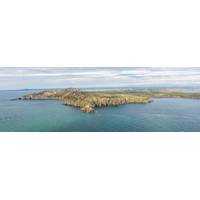
Wales Backs Morlais Tidal Energy Scheme
Môn, the Morlais tidal scheme is the first of its kind anywhere in the world and will be operational from 2026.The Anglesey site has the potential to generate enough energy for up to 180,000 typical Welsh households, offering a unique ‘plug and play’ model for developers of tidal energy devices.This will help reduce costs as they scale up operations to generate clean electricity.The Welsh Government investment will help fund the Cydnerth phase of the project, which will see the grid connection strengthened at Parc Cybi in Holyhead.The Morlais tidal energy scheme has the potential
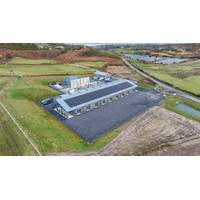
Inyanga and Verdant Form Partnership to Deliver Morlais Tidal Energy Project
development of the tidal energy industry,” added Richard Parkinson, CEO of Inyanga Marine Energy Group.The Morlais tidal energy scheme is located off the northwest coast of Holy Island.The area has been designated for the installation and commercial demonstration of multiple arrays of tidal energy devices, with a maximum installed capacity of 240 MW.When fully operational, the Morlais zone will be able to provide clean power for over 180,000 homes

US Invests Nearly $16 Million to Advance Marine Energy
that requires moving from single device testing to array testing with several devices grouped together.The funding announcement marks the first of five phases in a $35 million total investment from the Bipartisan Infrastructure Law to support the development and installation of one or more tidal energy devices that can be transitioned to a commercial project.The selected projects are:• A team led by Orcas Power and Light Cooperative (OPALCO), based in Eastsound, Washington, proposes to deploy a tidal energy turbine in Rosario Strait in the San Juan Islands in Washington State. The device is
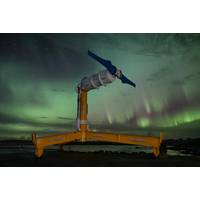
Nova VOLT gets $2.8m injection from Scottish government
Matheson. Photo courtesy Nova InnovationNova Innovation’s turbines have been powering the Shetland grid for over five years and will soon be deployed in North America and mainland Europe. In delivering VOLT, Nova will demonstrate what is required to efficiently scale up the production of tidal energy devices across the world.The VOLT project will run from 2021 to 2023
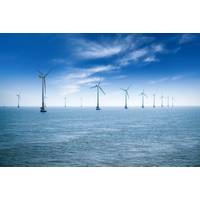
Engineers Expand the Window for Installing Monopiles
be developed and applied to the offshore wind farm sector and has the potential to be used in a variety of other offshore applications. Longitude has a track record of working on a variety of renewable projects including cable installations, vessel conversions metocean studies, wave and tidal energy devices, wind farm component transportation and subsea deployment. This latest project represents just one of the ways Longitude is working alongside the renewables sector to develop current methods and improve design capability
TechSurge: Ocean Energy for non-Grid Connected Applications
"Living Bridge" project at University of New Hampshire, and will include a welcome reception on November 2 followed by a full day technical program on November 3. The two day program on renewable ocean energy will feature 17 technical presentations on topics related to wave energy and tidal energy devices. There will be a user panel with experts from SPAWAR, The National Buoy Data Center and the Island Institute. Exhibitors will include MacArtney, Teledyne Marine, OGI, FSI, ORCINA/JTEC and others. See a program of events and register at: www.mtsociety.org

SCHOTTEL HYDRO Sells 16 Turbines to SME
. The cooperation between SME and SCHOTTEL HYDRO demonstrates that tidal energy can be produced cost-effectively. "It is great to be working with SCHOTTEL HYDRO to deliver an integrated system to the market. This multi turbine array, the first of its kind in the world, will prove that tidal energy devices can be installed in a low cost manner and operated profitably over the long term,” said Jason Hayman, Managing Director of SME. “Commercially viable tidal energy has arrived with this integrated solution from SME and SCHOTTEL HYDRO.”
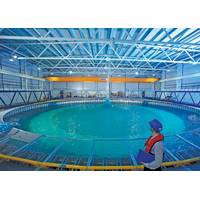
ABB Equipment for High-tech Ocean Simulator
. Located at the University of Edinburgh’s King’s Buildings campus, the $15 million ocean energy research facility comprises a 25m diameter test tank. A central floor section, 15m in diameter, lifts above the water and the facility is designed for sophisticated testing of wave and tidal energy devices and projects, fixed and floating offshore wind structures, and other marine technologies by applying scaled equivalents of waves up to 28m high and currents of up to 14 knots. It is used for testing and de-risking marine energy technologies and projects at between 1/10th and 1/40th scale
ABB Equipment for High-tech Ocean Simulator
at the University of Edinburgh’s King’s Buildings campus, the £10.3 million ocean energy research facility comprises a 25 m diameter test tank. A central floor section, 15 m in diameter, lifts above the water and the facility is designed for sophisticated testing of wave and tidal energy devices and projects, fixed and floating offshore wind structures, and other marine technologies by applying scaled equivalents of waves up to 28 m high and currents of up to 14 knots. It is used for testing and de-risking marine energy technologies and projects at between 1/10th and 1/40th

 February 2025
February 2025





